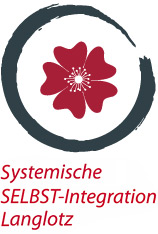Explanation of terms
THE BORDER
The border is the basic principle of life, starting with the unicellular organisms. It enables demarcation from the environment, but also exchange. The result is a space with its own “inner milieu” that differs from that of the surroundings.
THE INNER SPACE
The border is also the basic principle of the psychological structure. It creates an inner space that can be different from the surroundings. This is a prerequisite for individual identity, which can be different from the environment.
THE SELF
“Self” is understood here as that part of us which could be unique – our authentic needs, our own perception, our abilities. It is initially a potential that can further develop and differentiate.
THE BORDER AND YOURSELF
Our power to distinguish between what is our own and what is foreign creates an invisible boundary. And it works like an unconscious protective reflex. It keeps the inner space free from the foreign, so that the “self” can develop: an own identity, own memory, with own perception, access to own feelings, desires and needs. This makes the connection with the “self” possible. This is the prerequisite for orientation and autonomy, for self-regulation, growth and development.
THE LOSS OF BORDER AND SELF-ALIENATION
Through injuries, violence or loss, mostly in childhood, the self-protective reflex is impaired or blocked to varying degrees. Usually an internalized, unconscious prohibition of demarcation arises. With the loss of boundaries and one’s own space, the connection to one’s own self is lost. Also the identity, access to one’s own feelings, desires and needs, and thus orientation, self-organization, autonomy. Instead there is self-alienation, loss of identity, disorientation and loss of autonomy.
INTROJECT
In order to survive nonetheless, those affected learn to orientate themselves towards something strange: a parent, the teacher, the supervisor – or the partner. These take the place of the lost self, so to speak, and become INTROJECTS. Although they enable survival, they block the connection to one`s own SELF, disrupt one`s “own program”, so to speak, and thus become “Trojans”.
CAPTAIN ON THE STRANGER’S BOAT
The conditioning through the trauma also has the effect that those affected feel responsible in other people’s space and take on different roles there. It is not uncommon for them to be convinced that they are the better pilot or captain on the “boat” of their partner, for example. The partner experiences this as intrusive. This prevents them from being on their own “boat”. So one`s own boat can get into distress because the captain is on the wrong boat.
SYMBIOSIS AS A SURVIVAL STRATEGY
In order to at least survive, the only thing left for those affected is to orientate themselves towards the unfamiliar, to adapt symbiotically. The own self, as it makes this adjustment more difficult, is devalued as threatening, excluded, split off. Those affected tend to allow themselves to be manipulated and to manipulate themselves, to make themselves dependent and to make others dependent. “You need it to be needed!“
SYMBIOSIS STRUCTURE
Symbiosis becomes structure. It unconsciously determines all (ALL!) Relationships. This is the root of confusion and suffering.
CONFUSION, STRESS, SICKNESS
The confusion of symbiosis is:
- Identification no longer with the self but with strangers
- Demarcation of “self” parts instead of demarcation of the foreign
- The potential for aggression can no longer develop constructively in the protection of the border, so to speak in the healthy channel of demarcation. It accumulates, it becomes destructive, is directed against “self” components (self- injury, stress, exhaustion, burnout, depression, psychosis, somatic illness) or breaks out in an uncontrolled manner.
Continue to The Solution Process >>
